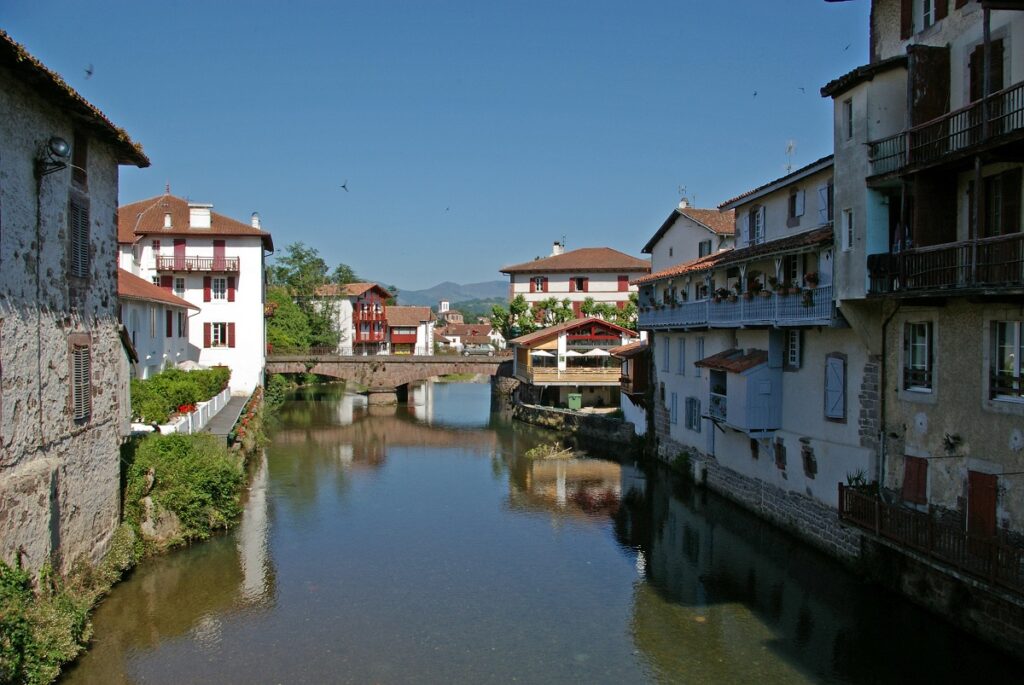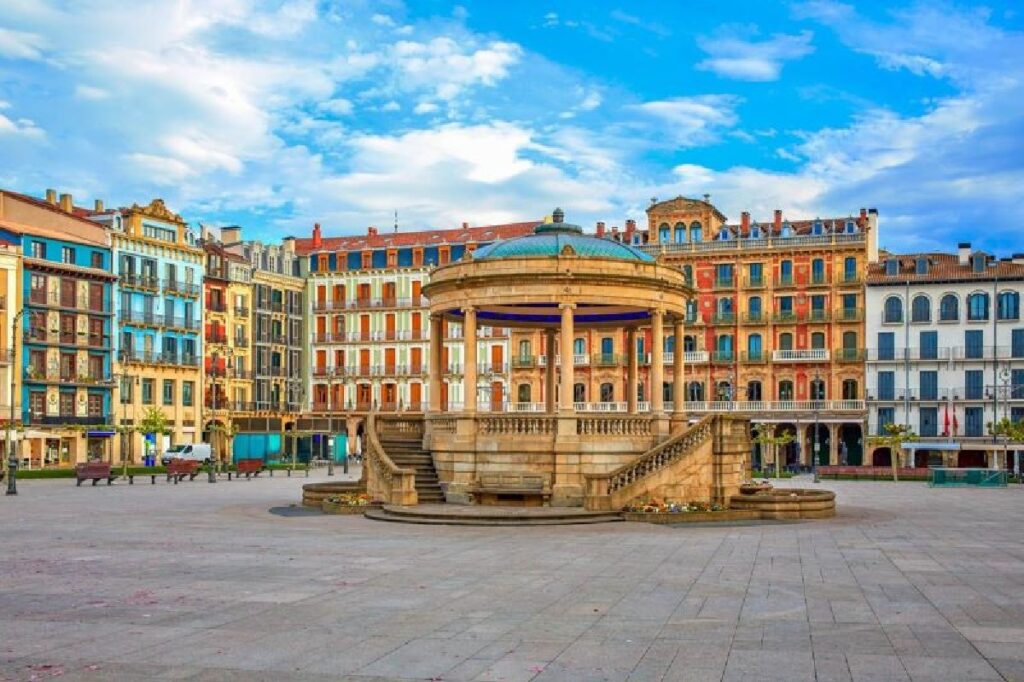Are you setting off on the pilgrimage to Santiago de Compostela? Depending on your itinerary, here are a few ideas on where to stay along the pilgrimage route!
Now more of a cultural and spiritual journey than a religious one, the pilgrimage to Santiago de Compostela has been going on since the 9th century and attracts over 200,000 walkers and pilgrims every year. A Catholic pilgrimage whose aim is to reach the tomb of the apostle Santiago the Great in the crypt of the cathedral of Santiago de Compostela (Galicia, Spain), it is a sacred route that is over 1,200 years old.
Would you like to walk part of this route for religious, cultural or sporting reasons? But where can you find a refuge to sleep along the Camino Francés (“French Way”, the name given to the path that crosses Spain from France, accounting for 2/3 of all walkers)? The town of Saint-Jean-Pied-de-Port, in the Pyrénées-Atlantiques, is often considered a starting point for walkers. For those of you who have chosen to make this spiritual journey for the first time, or if you are returning to seek a Christian welcome in one of the refuges of this mythical destination, here, on the Spanish side, is where to stay along the pilgrimage to Santiago de Compostela!
Saint-Jean-Pied-de-Port: an enchanting village

Situated in the Pyrénées-Atlantiques department, Saint-Jean-Pied-de-Port has been classified as one of the “Most Beautiful Villages in France” since 2016, in the foothills of the Pyrenees. On your first visit, be sure to see the Mendiguren Citadel, the ramparts of the upper town and the Porte Arrankuntzea (or Porte Saint-Jacques), or the bishops’ prison. In the old town, take a look at the Rue de la Citadelle – with its pink sandstone facades and some houses dating back to the 16th century – the bridge and the Porte Notre-Dame or the Church of the Assumption of the Virgin.
Find a hotel or a bed in breakfast in Saint-Jean-Pied-de-Port
Roncesvalles: a restorative stopover

It’s best to choose to sleep in a gîte in Roncesvalles if your feet and calves aren’t strong enough to continue the hike.
🔗 Read Also: The Pilgrim’s route to Santiago de Compostela: 5 tips for a successful pilgrimage
This stage is on the Spanish side, around thirty kilometres from your first stage. There are plenty of hotel rooms to stay in Roncesvalles (compared with the size of the town), so you can recharge your batteries for the next few days of walking. Roncesvalles has an interesting historical and cultural heritage to discover, including the Pilgrims’ Cross, the Collegiate Church Museum, Santiago’s Chapel and Roland’s Table.
Find a hotel or a bed and breakfast in Roncesvalles
Pamplona: charming accommodation

Pamplona could be your fourth or fifth day of walking.
The capital of Navarre, it has a population of 197,989 and many historic monuments to visit. Thinking of finding a place to stay in Pamplona? Take the opportunity to visit Pamplona’s Santa Maria cathedral or the church of San Nicolás, if you’re a fan of religious buildings. In the city centre, between Avenida Conde Oliveto and the banks of the River Arga, you’ll find plenty of places to stay.
Find a hotel or a bed and breakfast in Pamplona
Logroño: a medieval getaway

Staying in a refuge in Logroño, the capital of La Rioja, is a good way to combine city life with a green setting for a stroll: Logroño is crossed by the Ebro, Spain’s most powerful river, and boasts a wealth of green spaces and viewpoints.
🔗 Read Also: Camino de Santiago: Routes, Stages and Maps
What’s more, the city boasts a wealth of architectural, historical, cultural and religious heritage: the Santa Maria la Redonda cathedral, the bridge and the city centre are proof of this. The Revellín Gate is a surviving vestige of the town’s ancient medieval fortifications.
Find a hotel or a bed and breakfast in Logroño
Burgos: the ancient cradle

Why stay in Burgos? Because it’s roughly halfway along the route.
If you’re continuing on your way to Santiago de Compostela, book one or two nights in a refuge to visit Burgos, the cradle of Old Castile. Visit Santa Maria Cathedral – built in Gothic style between 1221 and the 15th century – and the old town via the Santa Maria Bridge. Enjoy the cafés, terraces and gardens of the esplanade of the Paseo del Espolón, a pleasant area in which to stay in Burgos, lively both day and night.
Find a hotel or a Bed and beakfast in Burgos
León: the historic hostel near Santiago de Compostela

The city of León, with 125,317 inhabitants (2017), is yet another stopover on the pilgrimage to Santiago de Compostela, where pilgrims found accommodation and food at the monastery of San Marcos.
Attractions in León include the cathedral, the basilica of San Isidro, the San Marcos hostel and the Guzmanes palace. Night owls will love staying in León’s wet district (Barrio Húmedo), a great place to party. The city also hosts the Holy Week processions (preceding Easter).
Find a hotel in León
Find a bed and breakfast in León
Santiago de Compostela: the final welcome for pilgrims

Have you finally reached the end of your pilgrimage, after a month’s walk and a journey of 1,500 kilometres? Santiago de Compostela has a population of 95,671 and is the final destination of the pilgrimage, at the cathedral – built between 1098 and 1750 in Romanesque and Baroque styles – where pilgrims have been honouring the tomb of James of Zebedee since the 9th century.
The old town is a UNESCO World Heritage Site, with many buildings, squares and alleyways that are well worth a visit. Staying in a refuge in Santiago de Compostela allows you to travel through time, between tradition, spirituality and modernity.
Find a hotel or a bed and breakfast in Santiago de Compostela
The pilgrimage to Santiago de Compostela offers not only a profound spiritual experience, but also a unique opportunity to discover historic and cultural sites along the way. Finding suitable accommodation along the route, from the picturesque Pyrenees to the majestic Santiago de Compostela, allows pilgrims to experience this unique adventure to the full. So, which will be your next refuge on this legendary route?




